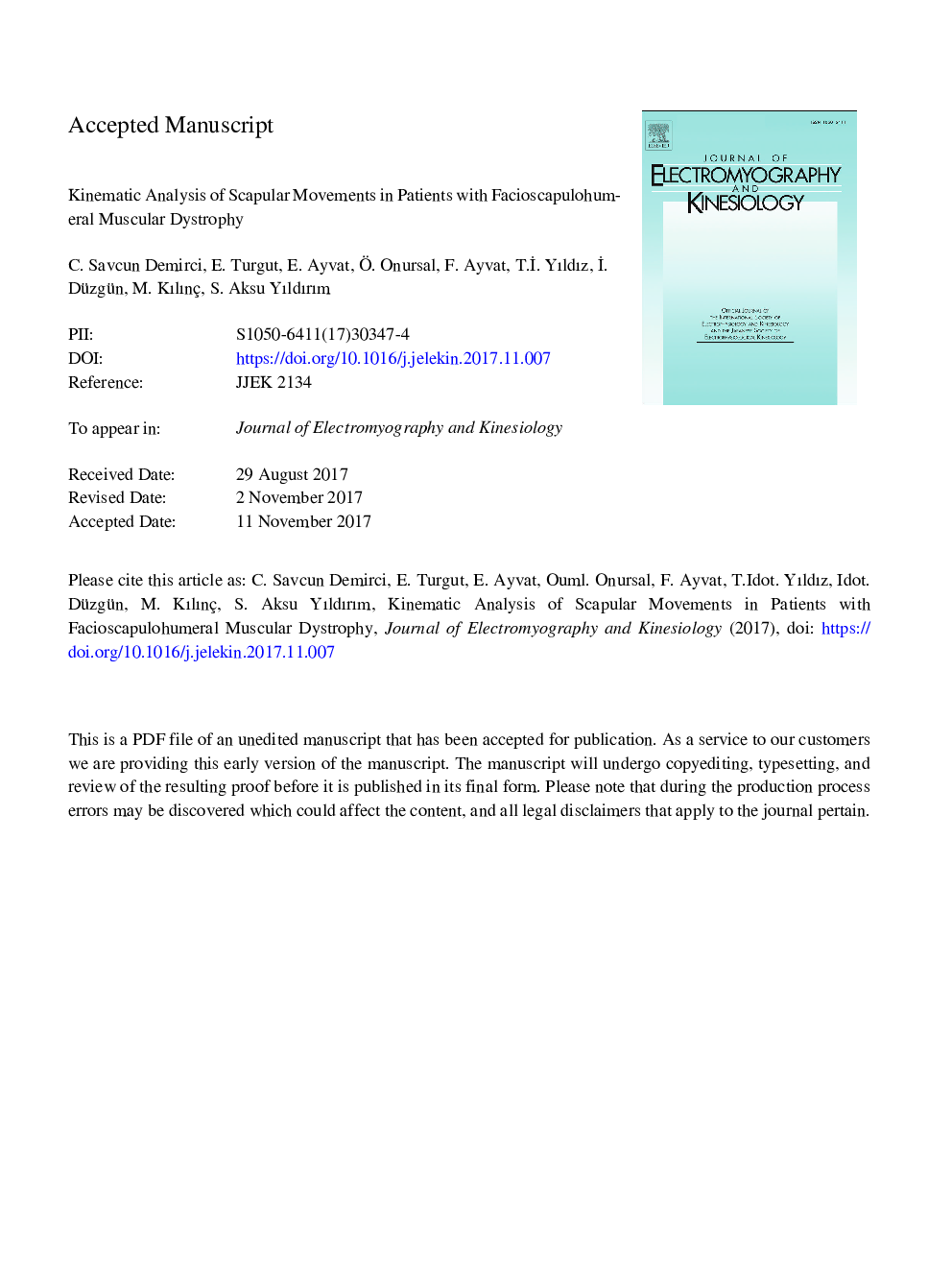| کد مقاله | کد نشریه | سال انتشار | مقاله انگلیسی | نسخه تمام متن |
|---|---|---|---|---|
| 8799831 | 1604175 | 2018 | 22 صفحه PDF | دانلود رایگان |
عنوان انگلیسی مقاله ISI
Kinematic analysis of scapular movements in patients with facioscapulohumeral muscular dystrophy
ترجمه فارسی عنوان
آنالیز حرکتی حرکت حرکات ناحیه ای در بیماران مبتلا به دیستروفی عضلانی فیبوساکاپولوهومرر
دانلود مقاله + سفارش ترجمه
دانلود مقاله ISI انگلیسی
رایگان برای ایرانیان
کلمات کلیدی
موضوعات مرتبط
علوم پزشکی و سلامت
پزشکی و دندانپزشکی
ارتوپدی، پزشکی ورزشی و توانبخشی
چکیده انگلیسی
The purpose of this study is to evaluate scapular movements by the three-dimensional electromagnetic system during shoulder elevation in FSHMD patients, and to compare the results with healthy individuals. 10 patients with FSHMD and 10 healthy individuals were included in the study. Scapular anterior-posterior tilt, upward-downward rotation and internal-external rotation at 30°, 60° and 90° were evaluated using the three-dimensional electromagnetic system during the elevation of the upper limbs in the scapular plane. Humerothoracic elevation levels on the dominant and non-dominant sides were found to be lower in the patients than healthy individuals (pâ¯<â¯.001). Both scapula were rotated downwards at 30° (dominant/non-dominant pâ¯<â¯.001) and 60° (dominant pâ¯=â¯.009, non-dominant pâ¯=â¯.04) of humerothoracic elevation, the scapula was rotated internally at 30° of humerothoracic elevation on the non-dominant side (pâ¯=â¯.03), and the scapula was tilted posteriorly at 90° of humerothoracic elevation on the non-dominant side (pâ¯=â¯.009) in patients. These existing abnormal patterns of the scapula in the patients increase the risk of impairment, pain, impingement and instability especially in the activities that require arm elevation. It is thought that physiotherapy approaches should first be emphasized to improve scapular stabilization and strengthening exercises should then be performed for the shoulder girdle muscles.
ناشر
Database: Elsevier - ScienceDirect (ساینس دایرکت)
Journal: Journal of Electromyography and Kinesiology - Volume 38, February 2018, Pages 88-93
Journal: Journal of Electromyography and Kinesiology - Volume 38, February 2018, Pages 88-93
نویسندگان
C. Savcun Demirci, E. Turgut, E. Ayvat, Ã. Onursal, F. Ayvat, T.Ä°. Yıldız, Ä°. Düzgün, M. Kılınç, S. Aksu Yıldırım,
